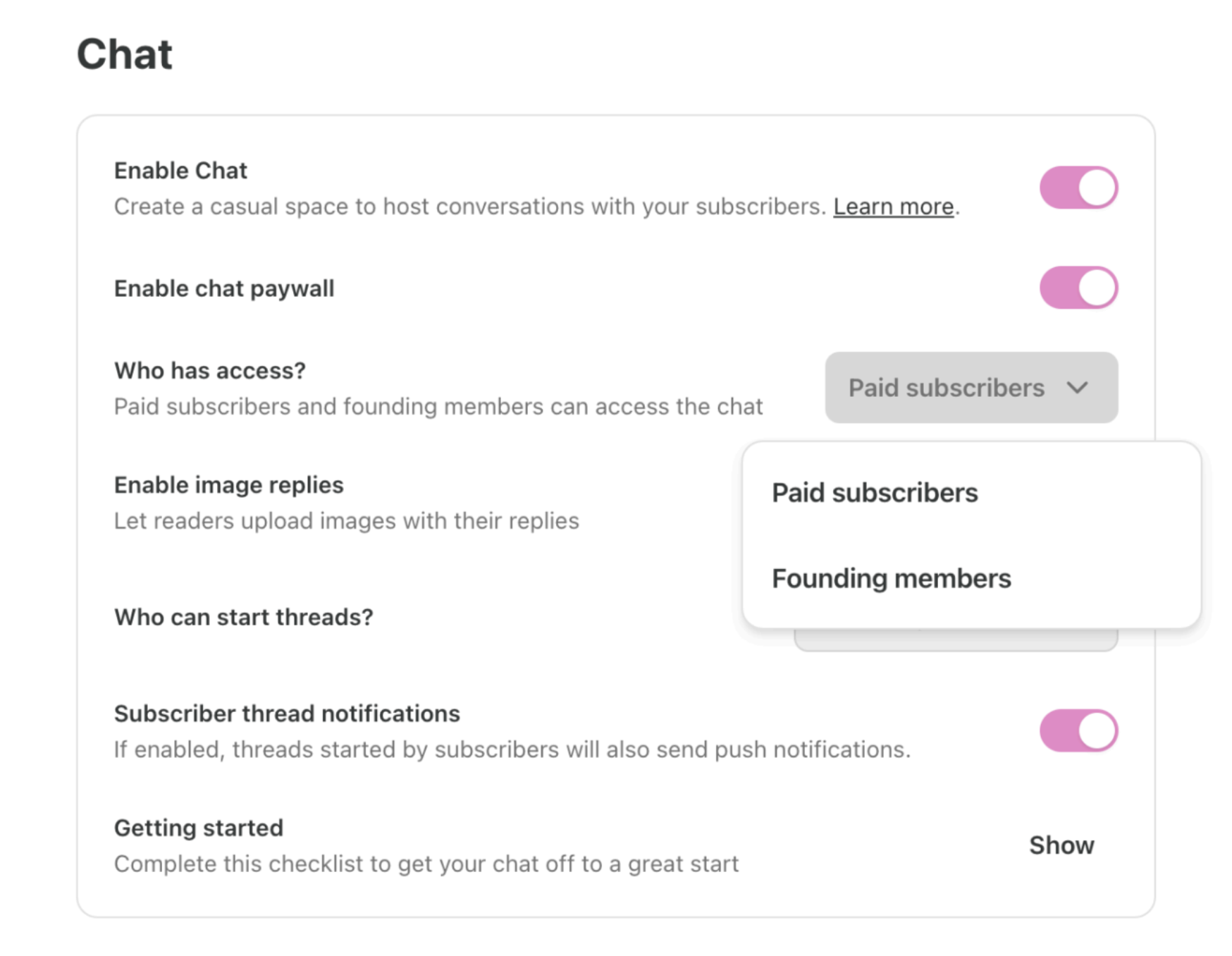Substack is launching the power for writers to paywall their whole Chat or particular threads to paid or founding members solely, the corporate introduced on Wednesday. The rollout of the brand new function comes 18 months after Substack launched Chat as a approach for writers to speak instantly with their loyal readers.
The corporate believes paywalled Chats will assist hold conversations intimate and freed from trolls, whereas additionally performing as a paid perk for readers. Substack says its knowledge exhibits that lively Chat members are 12% extra prone to retain their subscriptions.
Writers can select to paywall an entire Chat or particular person Chat threads. As soon as a author paywalls their Chat, free subscribers and non-subscribers shall be prompted to improve to view the Chat.

Picture Credit: Substack
Substack can be upgrading the Chat interface to make it simpler to navigate giant teams. The corporate is launching the power to go looking Chats to make it simpler for individuals to search out outdated threads. Plus, it’s introducing thread notifications and new reply badges to make sure individuals don’t lose their place in a dialog. Substack can be upgrading its back-end techniques to load new Chats and replies in actual time, making it simpler to remain up-to-date on conversations when discussing dwell issues.
When Substack first launched Chat, the corporate hoped to capitalize on Twitter’s upheaval within the wake of Elon Musk’s takeover. Substack nonetheless sees Chat as a viable various to Twitter (now X), because it famous in its newest weblog publish that “many readers choose the simplicity of Substack Chat to different platforms.” The corporate then highlighted a remark from a paid subscriber saying chat is an effective substitute for X.
Chat isn’t the one Substack function seeking to tackle X, as the corporate launched a Twitter-like “Notes” function a yr in the past. The Notes function lets customers share posts, quotes, feedback, photos, movies, and extra in a Tweet-like format. The short-form content material is displayed in a devoted Twitter-like feed.







